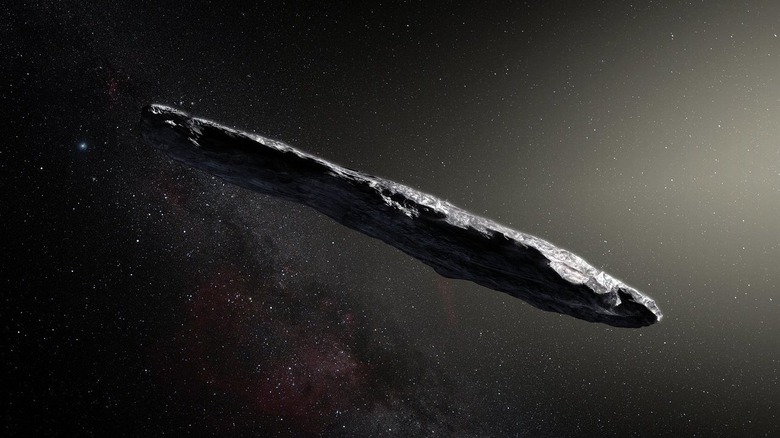Astronomers Might Finally Know Where That Mysterious 'Alien Probe' Came From
Late in 2017 our Solar System received a very peculiar visitor. Called Oumuamua, it was a comet (or was it an asteroid?) with a bizarre shape moving at incredible speed, and it sped around our Sun and then cruised right back out into space. It was the first confirmed interstellar object to ever show up in our neck of the woods, and it was a pretty special time for the astronomy community.
Now, with months of searching and pondering under their belts, researchers believe they may have pinpointed the origin of the object. Using data from the European Space Agency's Gaia space observatory the scientists have narrowed down the potential origin systems of Oumuamua.
Gaia's data was useful for the research because it contained the approximate positions of distant stars that would have been quite close to Oumuamua when it pass through their regions. The trajectories are estimates that yielded a total of four potential candidates.
What's particularly interesting about this latest round of research is that all four of the stars in question are dwarf stars with no observed planets on record. One of the most likely scenarios for an object like Oumuamua to have been sent our way is if it were slingshotted around a massive planet, but nobody has observed any such bodies around the star candidates in the study.
Oumuamua's appearance in our Solar System is a massive puzzle that astronomers are only just beginning to solve. Early on, the comet's strange shape — it's long and narrow like a cigar — and incredible speed made some scientists question whether it was actually an alien probe that was sent to survey star systems.
Subsequent efforts to listen in to the object and detect some kind of recognizable single yielded nothing but silence, but the object's behavior is still in question. Originally thought to be an asteroid, the object was eventually declared to be a comet after it was observed defying a gravitational pull that would have slowed it more than it did. The only explanation scientists could come up with is that it's being pushed along by gasses that are shooting out of it, which would make it more comet-like.
Whatever it really is, astronomers have a lot of data to sift through before we can determine where Oumuamua actually originated. We can only piece together its history based on what we've seen, but rest assured the story of this unusual object isn't over yet.
